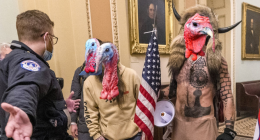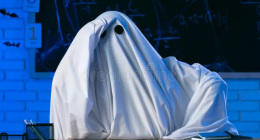Over the past few months, Stanford’s dining halls have been touting their new “50/50 mushroom-beef burgers”. Stanford Flipside’s reporters went undercover to learn about the secrets and motives behind this endeavor, and figure out what is actually going down on the Farm.
Stanford’s bio-engineering research facility was prohibitively far away, on the farthest reaches of the Dish hike, but that didn’t stop our sleuths from getting inside and seeing what it was all about.
“Not just for dinner, but for the future of the environment,” was the central motif behind the laboratory’s founding—an commitment to sustainability beyond anything ever previously imagined. “These half-cow, half-mushrooms would be extremely efficient to house and feed.
Mass-producing these gentle giants would have the agricultural effect of a second Green Revolution. Except this time, with giant fungus-cow hybrids.
They are tentatively called, ‘Mooshrooms.”
Stanford’s scientists are also eager to point out that turning all of its cows into mooshrooms can actually be considered a more ethical alternative to eating real meat. “Don’t think of it as an animal melded into a half-vegetable monstrosity.
Think of it as a mushroom that can also feel pain.”
It appears that the meat from these mooshrooms is very safe, but not without side effects. Consumers have reported higher levels of energy and attentiveness after their consumption, as well as slightly more vivid dreams.
However, it also appears that anyone that looks directly at the living mooshrooms or hears their low bleating suffers immediate debilitating hallucinations and blindness. While this makes harvesting the mooshrooms difficult, Stanford remains optimistic that in the future these mooshroom burgers will be able to replace all other food sources on campus.








